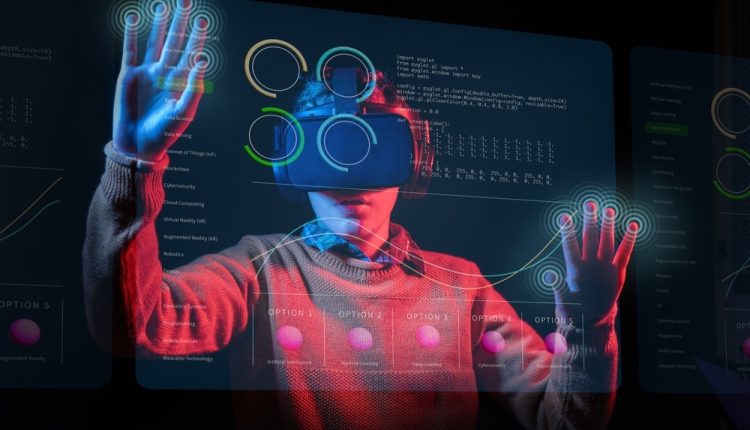In the fast-paced world of technology, innovations are continually pushing the boundaries of what is possible. One such area of advancement that has gained significant momentum in recent years is haptic technology. Haptic technology is the science of incorporating touch and tactile feedback into digital interfaces, creating immersive and interactive experiences for users. Over the past decade, haptic technology has undergone remarkable transformations, opening up new horizons and applications across various industries.
The Evolution of Haptic Technology
Haptic technology has come a long way since its inception. Initially, it was primarily used in gaming controllers to provide users with tactile feedback during gameplay. However, as technology advanced, haptic feedback found its way into smartphones, wearables, virtual reality (VR) devices, and even medical equipment.
Haptic Feedback in Consumer Electronics
Consumer electronics have witnessed a significant integration of haptic technology. Modern smartphones, for instance, use advanced haptic feedback mechanisms to simulate the sensation of physical buttons, making touchscreens more intuitive and user-friendly. This technology, often referred to as “haptic touch” or “taptic feedback,” enhances user interactions and elevates the overall user experience.
Haptic Feedback in Virtual Reality
Virtual reality has been revolutionized by haptic feedback. VR headsets now incorporate sophisticated haptic sensors and actuators that allow users to feel a sense of presence in virtual environments. Whether it’s the sensation of walking on different surfaces or the realistic feedback from virtual objects, haptic technology adds a new dimension to immersive VR experiences.
Applications Beyond Entertainment
While haptic technology has found its roots in the entertainment industry, its applications have expanded into diverse sectors.
Healthcare and Medical Training
In the field of healthcare, haptic technology plays a crucial role in medical training and surgery simulation. Surgeons can practice delicate procedures on haptic-enabled simulators, providing a realistic sense of touch and resistance. This training methodology enhances surgical skills, ultimately improving patient outcomes.
Automotive Industry
The automotive industry has embraced haptic feedback for enhancing safety and driver assistance systems. Haptic alerts can warn drivers about potential collisions, lane departures, or even provide navigation directions through subtle vibrations in the steering wheel or seat. These tactile cues reduce distractions and improve overall road safety.
Accessibility and Inclusivity
Haptic technology has also become a driving force for accessibility and inclusivity. For individuals with visual or hearing impairments, haptic feedback can bridge the gap by providing tactile information. Smart canes for the visually impaired, for example, use haptic signals to convey proximity to obstacles.
The Future of Haptic Technology
As we look to the future, the potential of haptic technology seems limitless. Here are some exciting developments on the horizon:
Haptic Interfaces for Augmented Reality (AR)
Augmented reality is poised to benefit greatly from haptic feedback. Imagine feeling the texture of a virtual object as you interact with it through AR glasses. This innovation promises to revolutionize industries like design, engineering, and education.
Telemedicine and Remote Surgery
Haptic technology is expected to play a pivotal role in telemedicine and remote surgery. Surgeons will be able to perform surgeries on patients located thousands of miles away, with the sensation of touch transmitted in real-time. This advancement has the potential to save lives in remote or underserved areas.
Haptic Clothing and Wearables
Haptic clothing and wearables are becoming increasingly popular. These garments are embedded with tiny actuators that can simulate sensations such as warmth or pressure. They have applications in gaming, sports training, and even therapy for individuals with sensory disorders.
Challenges and Considerations
While the future of haptic technology is exciting, it also comes with its set of challenges. These include:
Power Consumption
Haptic feedback systems can be power-hungry, especially in portable devices like smartphones. Innovations in energy-efficient haptic technology will be crucial to address this challenge.
Standardization
As haptic technology evolves, the industry will need to establish standards to ensure compatibility and consistency across devices and platforms.
Ethical and Privacy Concerns
The use of haptic technology in certain applications, such as virtual reality, raises ethical questions regarding user consent and data privacy. Striking the right balance between immersive experiences and user protection will be essential.
Conclusion
Haptic technology has evolved from a niche concept to a pervasive force that enhances our digital interactions and experiences. With applications spanning various industries and exciting developments on the horizon, it’s clear that haptic technology is here to stay. As experts in this field, we can look forward to a future where touch truly knows no bounds, revolutionizing the way we perceive and interact with the digital world.



Comments are closed.